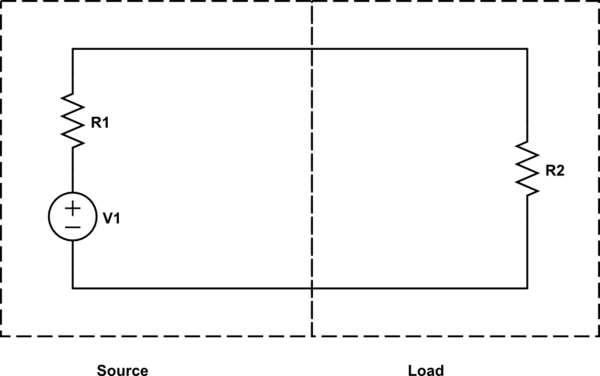It's simply a bromide amongst hams that you need to match the output impedance of a transmitter to the input impedance of an antenna, but I never thought through the implications of this until I came across this summary in a reputable textbook:
Of the power that is provided by the generator, half is dissipated as heat in the internal resistance (Rg) of the generator and the other half is delivered to the antenna. […] If the antenna is lossless (ecd = 1), then half of the total power supplied by the generator is radiated by the antenna during conjugate matching.
(Balanis, Antenna Theory, 1982 edition, p. 56)
Now in one sense of course this is true, because whenever we talk about "output impedance" we get this sort of picture (which I've cribbed from https://electronics.stackexchange.com/a/423884/9043):

simulate this circuit – Schematic created using CircuitLab
And so when the "source" and "load" resistances are matched as we all know they "should be", it's inevitable that only half the power would make it to the load!
But this is also rather astounding! So basically the "ideal condition" (matched load to source) which we all know is required for "maximum power transfer" implies by its very definition a maximum efficiency no greater than 50% under any circumstance?!
I had noticed this relationship in practical transmitters I have, that they generally need more than double the DC input power than their maximum RF output power. But I assumed this was for a — completely different? or directly related? — reason: the efficiency of the amplifiers. Even from audio electronics I new that a Class A power amplifier was less than 50% efficient, and just figured maybe that was what radios tended to use, instead of the more efficient topologies, to maintain clean output signals.
Now when I learned about amplifier efficiencies in audio context (e.g. <50% for Class A, <78.5 for Class AB, ~80% for Class C, over 90% for Class D…) I assumed that was overall system efficiency. But with a amplifier "source" and matched speaker "load" wouldn't the same power transfer issue also come into play — that regardless of how "efficient" the amp is it always has to heat up at least as much as however much energy the load is radiating? So a Class D amp would really be 45% efficient within the overall system — i.e. 90% of the theoretical maximum of 50% efficiency?
Or are these two things actually somewhat related, the 50-50 power split between the transmitter and the antenna, really meaning the same thing as the 50% efficiency of a Class A amp? Because on the one hand, I can't see how we would say "a Class AB amplifier wastes only 21.5% as heat in transistor switching…" without also mentioning "…but then of course 50% of that is also wasted as heat in the amplifier's 'source impedance' anyway". But on the other, if we really can make amplifiers more efficient than 50% then how does that "match up" with what Balanis is saying?